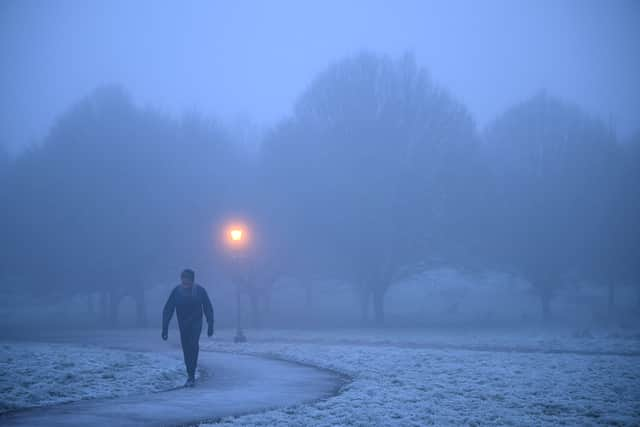What is thundersnow in UK? Phenomenon explained as Aberdeenshire struck by wintry weather
and live on Freeview channel 276
The UK has recorded sub-zero temperatures this month as the cold weather continues to cause widespread chaos for public transport and motorists on the road. Temperatures have plummeted drastically across the UK and this cold snap has come from arctic air dubbed as the ‘Troll of Trondheim’.
Areas of Scotland are amongst those to be hit the hardest by the cold weather and there were reports of an unusual weather phenomenon known as thundersnow in Aberdeenshire. Thundersnow is described as brighter and slightly quieter than usual thunder and lightning strikes. But what is thundersnow and what causes it to happen?
Here is everything you need to know.
What is thundersnow?
Advertisement
Hide AdAdvertisement
Hide AdThundersnow is a weather phenomenon, which as the name implies, is simply snow accompanied by thunder and lightning. Thundersnow is relatively rare and usually only produces bright flashes within the clouds. The muffling sound of snow acts as an acoustic suppressor to thundersnow making it slightly difficult to hear when it does occur and therefore making it quieter than the usual thunder and lightning.


According to the Met Office the snow contained within a thunderstorm dampens the sound of the thunder during a thundersnow event. The Met Office says: “Thundersnow is only likely to be heard if you are within two to three miles of the lightning.”
Usually thundersnow appears as a blue flash in the sky - it shows up as blue due to the concentration of ice crystals in the air.
The Met Office explains: “When thundersnow occurs at night the lightning appears brighter- this is because the light reflects off the snowflakes.”
What causes thundersnow to occur?
Advertisement
Hide AdAdvertisement
Hide AdThundersnow occurs when the air closest to the ground is warm enough to rise and form a thunderstorm, but still cool enough to be able to freeze into snow.
Is thundersnow dangerous?
Thundersnow is just as dangerous as the typical thunder and lightning strikes that you get at other times of the year. However, thundersnow is much more difficult to anticipate as it is much quieter and you are only likely to hear if you are within a two to three mile distance.
How long is the cold snap expected to last?
The latest forecast claims that icy weather conditions are here to stay in the UK. The Met Office have issued a fresh amber weather warning and it is anticipated that areas of central Scotland, including Glasgow could experience travel delays and even power cuts in some areas.
The cold snap is expected to last until the end of the week with milder and wetter weather coming in on Sunday. However, the milder conditions are expected to be short lived and the Met Office are predicting another cold snap in the build up to Christmas.
Comment Guidelines
National World encourages reader discussion on our stories. User feedback, insights and back-and-forth exchanges add a rich layer of context to reporting. Please review our Community Guidelines before commenting.
